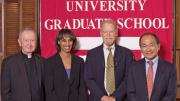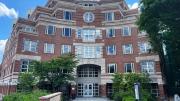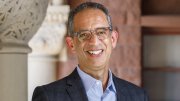The Graduate School of Arts and Sciences Centennial Medal, first awarded in 1989 on the occasion of the school’s hundredth anniversary, honors alumni who have made contributions to society that emerged from their graduate studies. It is the highest honor the Graduate School bestows, and awardees include some of Harvard’s most accomplished alumni. The 2016 recipients, announced at a ceremony on May 25, are: Francis Fukuyama, Ph.D. ’81, a political scientist, political economist, and author; David Mumford ’57, Ph.D. ’61, a theoretical and applied mathematician who studies visual perception; John O’Malley, Ph.D. ’65, a priest, professor of theology, and historian of early modern Catholicism; and Cecilia Rouse ’86, Ph.D. ’92, an economist who served as adviser to two presidents and is now dean of the Woodrow Wilson School of Public and International Affairs at Princeton. For more about the honorands, see harvardmag.com/centennial-16.
Harvard Graduate School of Arts and Sciences Centennial Medalists of 2016
Harvard Graduate School of Arts and Sciences Centennial Medalists of 2016
Honorands whose contributions to society emerged from graduate study

From left: John O’Malley, Cecilia Rouse, David Mumford, and Francis Fukuyama
Photograph by Tony Rinaldo/Graduate School of Arts and Sciences
You might also like
The School of Public Health, Facing a Financial Reckoning, Seizes the Chance to Reinvent Itself
Dean Andrea Baccarelli plans for a smaller, more impactful Chan School of 2030.
Harvard Kennedy School Unveils American Service Fellowship
Will fund degrees for 50 public servants and military veterans
John Goldberg named Dean of Harvard Law School
A professor at HLS since 2008, he steps up from the interim role.
Most popular
Explore More From Current Issue

The Trouble with Sidechat
No one feels responsible for what happens on Harvard’s anonymous social media app.

This TikTok Artist Combines Monsters and Mental Heath
Ava Jinying Salzman’s artwork helps people process difficult feelings.






